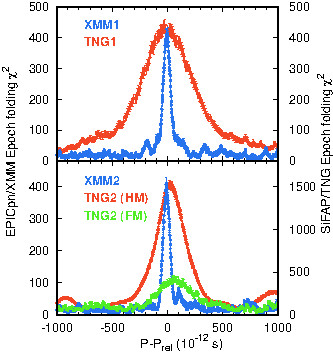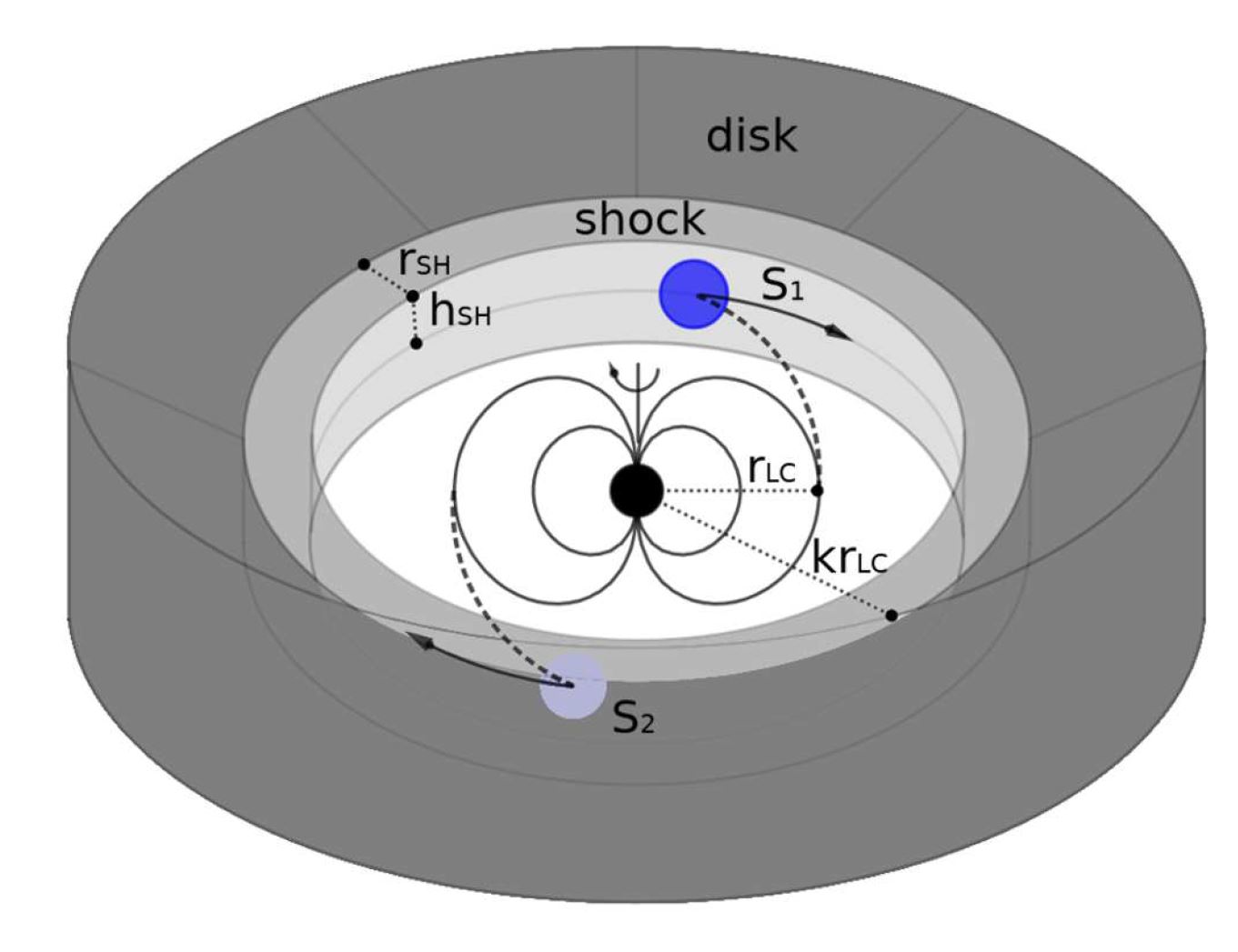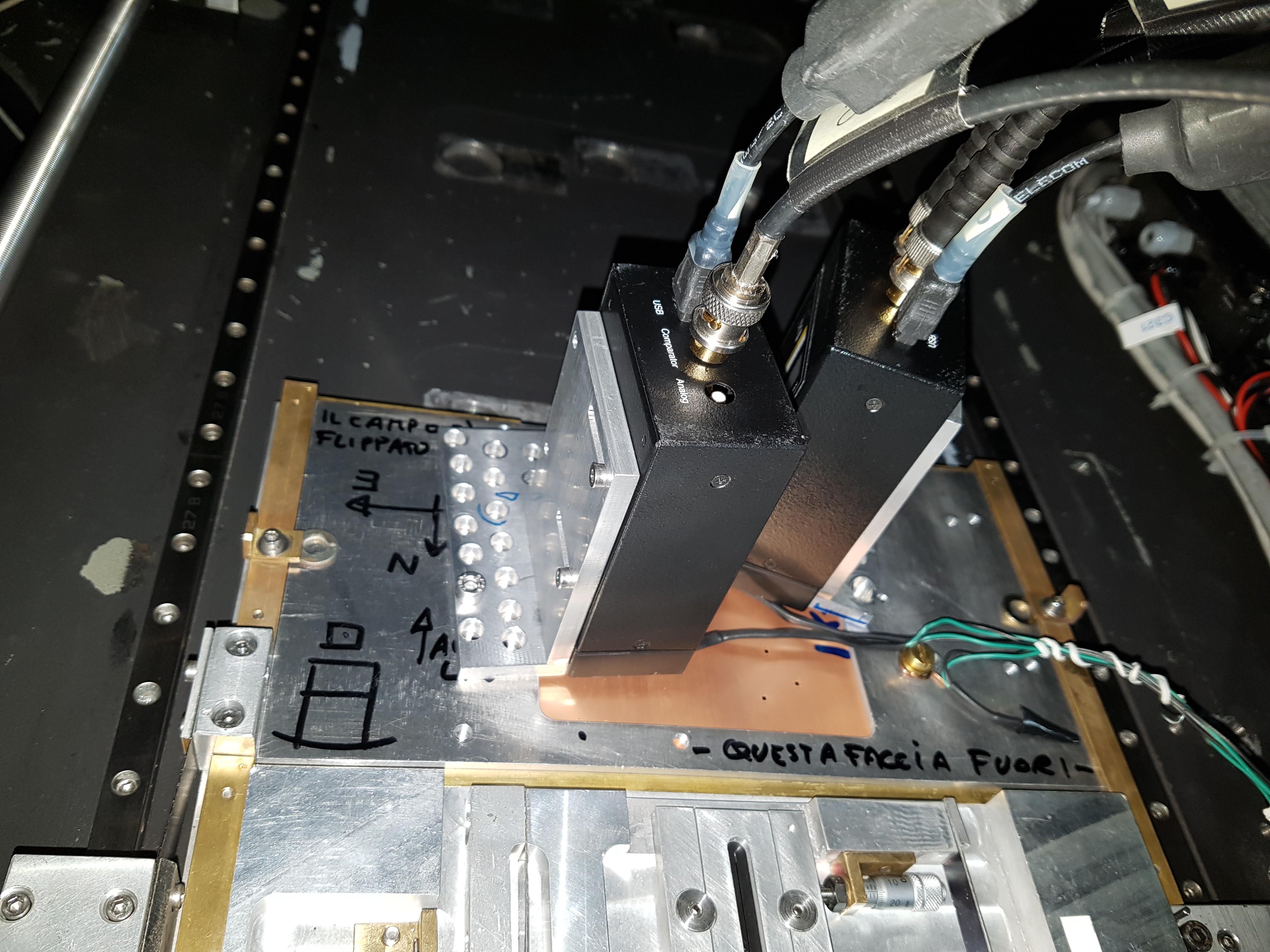Telescopio Nazionale Galileo discovers a millisecond pulsar that beats in unison at optical and X-ray energies
For the first time a team of researchers have observed synchronized optical and X-ray pulses from a fast spinning millisecond pulsar, PSR J1023+0038. This discovery indicates that a common physical mechanism produces both phenomena, something hardly reconciled with existing models and which led the authors to propose a new scenario. This result was recently published by the Astrophysical Journal and was made possible by simultaneous observations performed in May 2017 by the Telescopio Nazionale Galileo (TNG) equipped with the fast optical photometer SiFAP as a visiting instrument, by the ESA X-ray Telescope XMM-Newton and by a few more optical and X-ray observatories.
Millisecond pulsars are the fastest known spinning stars. They are neutron stars which spin around their axis a few hundreds of times every second. Something located at the equator of the star travels at ~10% the speed of light. Coupled to their extremely small size (a 10 km radius for a mass exceeding that of the Sun) this makes them truly relativistic objects. Their incredibly high velocity results from the capture of mass transferred by their companion star in a binary system.
X-ray pulses are often observed when a millisecond pulsar accretes the mass transferred by its companion star, channelling the stream of plasma towards its magnetic poles. On the other hand, non-accreting millisecond pulsars emit radio and gamma-ray pulses powered by the rotation of their magnetic field.
A few binary millisecond pulsars have been observed to switch between a radio pulsar regime and an accreting X-ray pulsar phase over a few days. Such pulsars are dubbed transitional and caught the interest of a large community aimed at understanding how the interaction between the pulsar magnetic field and the mass in-flow shapes the observed changes of state.
The Telescopio Nazionale Galileo was specifically equipped with a high-speed photometer - the Silicon Fast Astronomical Photometer (SiFAP) – to observe the cornerstone of transitional systems, PSR J1023+0038. Surprisingly, also the optical emission turned out to pulse at the 1.6 ms spin period of the pulsar, making it the first optical millisecond pulsar ever seen.
This discovery raised more questions than it answered, as optical pulsations turned out to be stunningly bright. To solve this puzzle, a team of researchers led by Alessandro Papitto (INAF - Astronomical Observatory of Rome) proposed to observe the source with high-time resolution instruments simultaneously at optical and X-ray energies. A two-days observational campaign spearheaded by SiFAP as visting instrument at the Telescopio Nazionale Galileo and by the ESA X-ray Telescope XMM-Newton, comprising five more facilities (NASA Swift and NuSTAR, Gran Telescopio Canarias, Nordic Optical Telescope, Observatori del Montsec) took place in May 2017.
Optical and X-ray pulsations turned out to have a similar shape and were repeatedly observed to simultaneously appear for a few tens of minutes and then disappear at a glance. This clearly pointed to a single physical mechanism powering the pulsed emission observed in both bands. Conventional models could not explain the results of these observations. The presence of X-ray pulses suggests that plasma is falling onto the surface of the neutron star, but the observed optical pulses are much brighter than expected. On the other hand, models based on the energy released by the rotating magnetic field of the pulsar fell short of accounting for the brightness of the X-ray pulses.
The authors proposed a new scenario based on the interaction between the pulsar wind, powered by the rotation of the magnetic field of the neutron star, and the plasma in the accretion disk. Optical and X-ray pulsations might be produced at the boundary region where the disk is truncated by the relativistic pulsar wind. There, relativistic particles would be injected with every pulsar rotation and quickly radiate their energy through synchrotron process, so yielding the observed optical and X-ray pulses. Pulsations would disappear when the boundary is pushed farther from the pulsar by the pressure of its wind.
This model predicts the optical pulses to lag the X-ray pulses by a few hundreds of microseconds, as the synchrotron emission takes longer to emit optical photons than X-rays. The simultaneous observations reported in the article indicate a lag compatible with the expectations of the model. However, significant systematic errors affect these estimates and new observations are required to obtain more accurate measurements and test the model.
According to this scenario, PSR J1023+0038 could be the prototype of a brand-new class of ~100 km wide dwarf pulsar wind nebulae. Similar sources could shed light on the properties of a pulsar wind close to the region where it is launched and on its interaction with surrounding high-density plasma.
These observations confirmed the ability of the photometer SiFAP in detecting fast coherent signals at optical wavelengths and the brilliant perspective of studying relativistic objects such as neutron stars and black holes with high-timing resolution at visible wavelengths.
More information at the paper: Pulsating in unison at optical and X-ray energies: Simultaneous high-time resolution observations of the transitional millisecond pulsar PSR J1023+0038
A. Papitto, F. Ambrosino, L. Stella, D. Torres, F. Coti Zelati, A. Ghedina, F. Meddi, A. Sanna, P. Casella, Y. Dallilar, S. Eikenberry, G. L. Israel, F. Onori, S. Piranomonte, E. Bozzo, L. Burderi, S. Campana, D. de Martino, T. Di Salvo, C. Ferrigno, N. Rea, A. Riggio, S. Serrano, A. Veledina, L. Zampieri.

Detection of the pulse in the TNG/SiFAP (red and green points) and XMM-Newton (blue points) data during the observations of May 23 (top panel) and May 24 (bottom panel). Red and green points refer to the high and flaring modes of PSR J1023+0038

The schematic diagram of the pulsar wind scenario is proposed to explain the optical and X- ray pulses observed from PSR J1023+0038. Dashed lines represent the current sheet which expands from the light cylinder surface at rLC as an Archimedean spiral. Its arms crosses the termination shock (shaded in light gray) at S1 and S2 where particles are accelerated to relativistic energies. As long as the particle energy is quickly radiated away and the size of the shock is smaller than a few light cylinder radii, two bright synchrotron-emitting spots (drawn in blue) rotate at the shock surface. An observer will see pulses of radiation because the intensity received from S1 is modulated by the angle under which the spot is seen, and the emission coming from S2 is absorbed by the optically thick disk in-flow (shaded in dark gray).

A picture of SiFAP temporarily mounted on the long slit translation stage of Dolores at the Nasmyth B focus of the TNG. One photometer is used for the target pulsar and one is used for a reference star.

